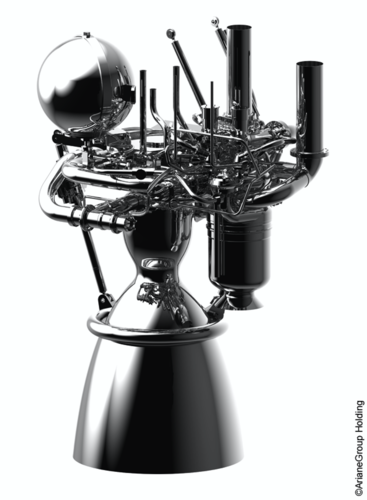MTG-S1 and Copernicus Sentinel-4 mission highlights
Wednesday, 02 July 2025 12:00 Video:
00:03:30
Video:
00:03:30
Two meteorological missions – Meteosat Third Generation Sounder-1 (MTG-S1) and the Copernicus Sentinel-4 mission – have launched on board a SpaceX Falcon 9 from Cape Canaveral in Florida, US.
Both are world-class Earth observation missions developed with European partners to address scientific and societal challenges.
The MTG-S1 satellite will generate a completely new type of data product, especially suited to nowcasting severe weather events, with three-dimensional views of the atmosphere. It is the second in the MTG constellation to be prepared for orbit and is equipped with the first European operational Infrared Sounder instrument.
Copernicus Sentinel-4 will be the first
This is not the time to cut space-enabled medical research
Wednesday, 02 July 2025 12:00
Research that leverages space to develop treatments for blindness, cancer, and Parkinson’s disease is jeopardized by the $6.1 billion NASA budget cuts recently announced for 2026 by President Trump.
Space Force to fund development of Atomic-6 solar power for satellites
Wednesday, 02 July 2025 12:00
Based in Marietta, Georgia, Atomic-6 makes solar arrays that are designed to fold and unfold
Boeing ships more O3b mPower satellites with fixes SES might no longer need
Wednesday, 02 July 2025 11:30
Boeing has shipped two more O3b mPower broadband satellites to SES with hardware fixes the operator might no longer need thanks to a surprising assist from solar storms.
Weather clears as SpaceX launches European satellite
Wednesday, 02 July 2025 10:30This request seems a bit unusual, so we need to confirm that you're human. Please press and hold the button until it turns completely green. Thank you for your cooperation!
Press and hold the button
If you believe this is an error, please contact our support team.
185.132.36.159 : 02da94ed-a54a-408d-86b7-170396b3
Bezos-backed methane-tracking satellite lost in space
Wednesday, 02 July 2025 07:40This request seems a bit unusual, so we need to confirm that you're human. Please press and hold the button until it turns completely green. Thank you for your cooperation!
Press and hold the button
If you believe this is an error, please contact our support team.
185.132.36.159 : 1a414f39-58e3-472e-99c1-85cac1cb
Falcon 9 launches European weather satellite
Tuesday, 01 July 2025 23:07
A Falcon 9 launched a European satellite July 1 with a dual mission to collect weather data and monitor atmospheric pollution.
MTG-S1 and Copernicus Sentinel-4 launch highlights
Tuesday, 01 July 2025 22:00 Video:
00:02:30
Video:
00:02:30
Two meteorological missions – Meteosat Third Generation Sounder-1 (MTG-S1) and the Copernicus Sentinel-4 mission – have launched on board a SpaceX Falcon 9 from Cape Canaveral in Florida, US.
Both are world-class Earth observation missions developed with European partners to address scientific and societal challenges.
The MTG-S1 satellite will generate a completely new type of data product, especially suited to nowcasting severe weather events, with three-dimensional views of the atmosphere. It is the second in the MTG constellation to be prepared for orbit and is equipped with the first European operational Infrared Sounder instrument.
Copernicus Sentinel-4 will be the first
LeoLabs secures U.S. military funding for missile-tracking mobile radar
Tuesday, 01 July 2025 22:00
The funding was awarded through a Tactical Funding Increase (TACFI) agreement
The post LeoLabs secures U.S.
CAPSTONE™ Celebrates Three Years of Groundbreaking Achievements in Lunar Navigation and Autonomy
Tuesday, 01 July 2025 21:35
MTG-S1 and Sentinel-4 launch to change how we see our atmosphere
Tuesday, 01 July 2025 21:30
The second of the Meteosat Third Generation (MTG) satellites and the first instrument for the Copernicus Sentinel-4 mission lifted off at 23:04 CEST on Tuesday, 1 July. The satellite is now on its way to monitor Earth’s atmosphere from an altitude of 36 000 km. From this geostationary orbit, the missions can provide game-changing data for forecasting severe storms and air pollution over Europe.
MTG-S1 and Copernicus Sentinel-4 launch from Florida
Tuesday, 01 July 2025 20:04 Video:
00:00:57
Video:
00:00:57
Two meteorological missions – Meteosat Third Generation Sounder-1 (MTG-S1) and the Copernicus Sentinel-4 mission – have launched on board a SpaceX Falcon 9 from Cape Canaveral in Florida, US.
Both are world-class Earth observation missions developed with European partners to address scientific and societal challenges.
The MTG-S1 satellite will generate a completely new type of data product, especially suited to nowcasting severe weather events, with three-dimensional views of the atmosphere. It is the second in the MTG constellation to be prepared for orbit and is equipped with the first European operational Infrared Sounder instrument.
Copernicus Sentinel-4 will be the first
MethaneSAT fails in orbit
Tuesday, 01 July 2025 18:19
A privately funded satellite designed to measure methane emissions has failed after only a little more than a year in orbit.


 Image:
Brave for space
Image:
Brave for space